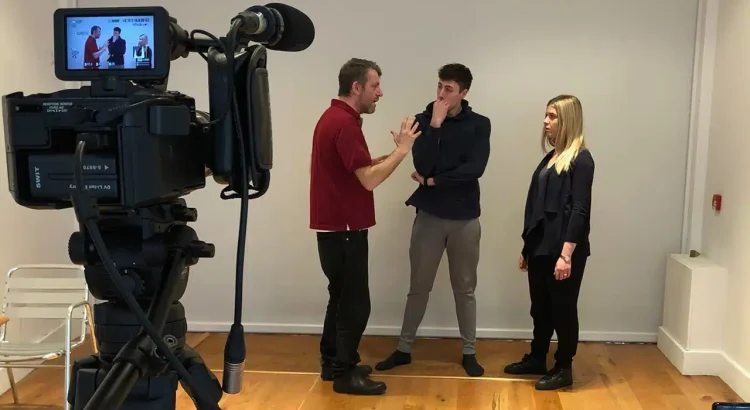John Hawk Insunrated – Acting class is not just about pretending to be someone else. For many students, it becomes a space for self-exploration, emotional release, and transformation. What may look like a simple theater rehearsal from the outside is often a deep and structured learning process from within. These classes combine movement training, vocal development, script work, improvisation exercises, and scene study. Students walk in with nervous energy, but they often walk out more grounded and self-aware.
Many first-time actors do not know what to expect. By the end of a semester, they not only perform but also connect more deeply with their emotional range. Acting students are taught to listen, respond, and remain present in every moment. This might sound simple, but mastering presence requires intense focus and vulnerability. In many cases, participants must unlearn social masks they have worn for years. It is not easy. But it is necessary.
A Typical Day in Class
Most acting classes begin with warm-ups. Students perform vocal drills, body stretches, and breathing exercises. Teachers help them release physical tension and prepare their voices for projection. They gradually build energy and shift focus inward. Next, instructors guide students through improvisational games. These activities go beyond play. They build spontaneity, quick thinking, and trust among classmates. In one exercise, students pass imaginary objects with changing weight and texture. In another, they respond in character to unexpected prompts.
After warm-ups and improv, students dive into monologues or partner scenes. Some scenes come from classical plays. Others feature contemporary scripts. Students read lines aloud, memorize blocking, and adjust their choices based on feedback. Instructors shape direction according to individual needs and growth. Constructive criticism drives progress. Teachers offer feedback with kindness and clarity. They remind students that authentic performance matters more than perfection. Every actor must build real connection and emotion. Audiences instantly sense honesty on stage.
“Read about: Amber Heat Alert as UK Temperatures Soar to 34°C”
Learning to Fail Forward
Acting class encourages mistakes. If someone drops a line or delivers a flat emotion, the class keeps going. Students stay in character and adapt on the spot. Instructors remind them that the best discoveries often emerge between failure and recovery. Actors use their body and voice as instruments. They train and refine these tools every week through physical and vocal conditioning. The classroom transforms into a lab. Students test reactions, adjust timing, and take emotional risks. These raw moments often lead to breakthroughs. Students also examine famous performances. They observe how great actors express emotion without exaggeration. They practice realism, refine subtlety, and eliminate overacting. Instructors highlight nuance and help students sharpen clarity of intention. Every scene demands purpose and presence.
The Emotional Impact of the Craft
Acting can be cathartic. Some students unlock memories they had buried. Others find relief in expressing emotions they usually hide. Tears are not uncommon. Laughter bursts freely. In one session, an actor might scream in character. In another, silence carries more power than words. Support from peers becomes essential. The classroom feels safe when every student respects the process. Bonds are formed. Trust deepens. Ensemble work relies on cooperation, timing, and vulnerability. Actors learn to give and receive energy in scenes. A good acting class does not only create performers. It helps humans become more honest, expressive, and empathetic. Students gain tools to observe the world more closely. They learn to ask better questions about human behavior. The stage becomes a mirror.
“Read more: Train Smarter, Not Longer: The 7-Minute Method Explained”
Challenges and Triumphs
Some students struggle with confidence. Others resist showing emotion in front of others. Gradually, walls come down. By mid-term, once-shy students speak boldly. They move with purpose. Eye contact becomes steady. Posture shifts. Costumes or sets may be minimal. The actor must generate atmosphere using imagination and intention. Props are suggested by movement. Locations are painted through voice and breath. Every choice is intentional. Teachers remind students that a character is not a mask. It is a lens. Stepping into a role means stepping outside the self but with full presence. The audience is taken on a journey only if the actor truly believes in that world. In many schools, final performances are shared with the public. Parents and friends witness the transformation. Confidence shines. Vulnerability is embraced. Laughter and applause fill the room. For many, this is not the end but the beginning of something bigger.



